Dealing with just-hatched Luna caterpillars can be a bit tricky, so if you have eggs, please start with Raising Luna Moths 1.
If you’re starting with caterpillars, you don’t have to do much besides set up an enclosure. Remember, they’re fully equipped to take care of themselves in the wild.

Then just make sure they have a steady supply of leaves, clean up the poop (you can dump it in your garden), and keep them safe from two things they haven’t evolved to deal with.
1. Insecticides: Never give your caterpillars leaves that have been anywhere near insecticides. If you don’t spray but your immediate neighbor does, that can still be a problem, because the stuff drifts everywhere.
2. Water: If you have stems in a jar or bottle, make sure the caterpillars can’t get down into the water.

See Food and Water for more detailed information.
Luna caterpillars lead fairly simple lives. They eat, poop, shed and cocoon.
From hatching to cocooning takes about four weeks. As they get bigger, so does their poop. Happily, it doesn’t smell. If you clean out the enclosure once every couple of days, everything should be fine.
Shedding
Like all caterpillars, Lunas go through five stages, or “instars.” Each time a caterpillar sheds a skin, it enters a new instar. It starts to eat and grow faster.
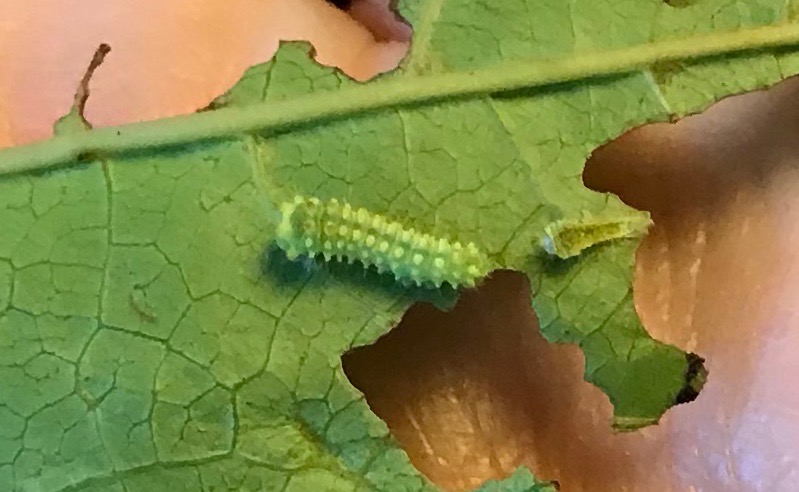
Caterpillars often stop eating a day or so before they shed, and just hang around. Don’t worry if you see them sitting still for a bit.
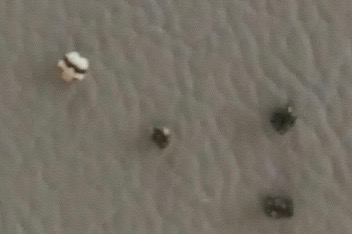
When a caterpillar sheds its skin, it also sheds its faceplate. Luna faceplates look like tiny storm trooper helmets, and often show up amongst the poop.

First instar Lunas (right) are mostly green. In the second instar (left) they start to acquire black or red spots.

The third instar (above) brings more spots.
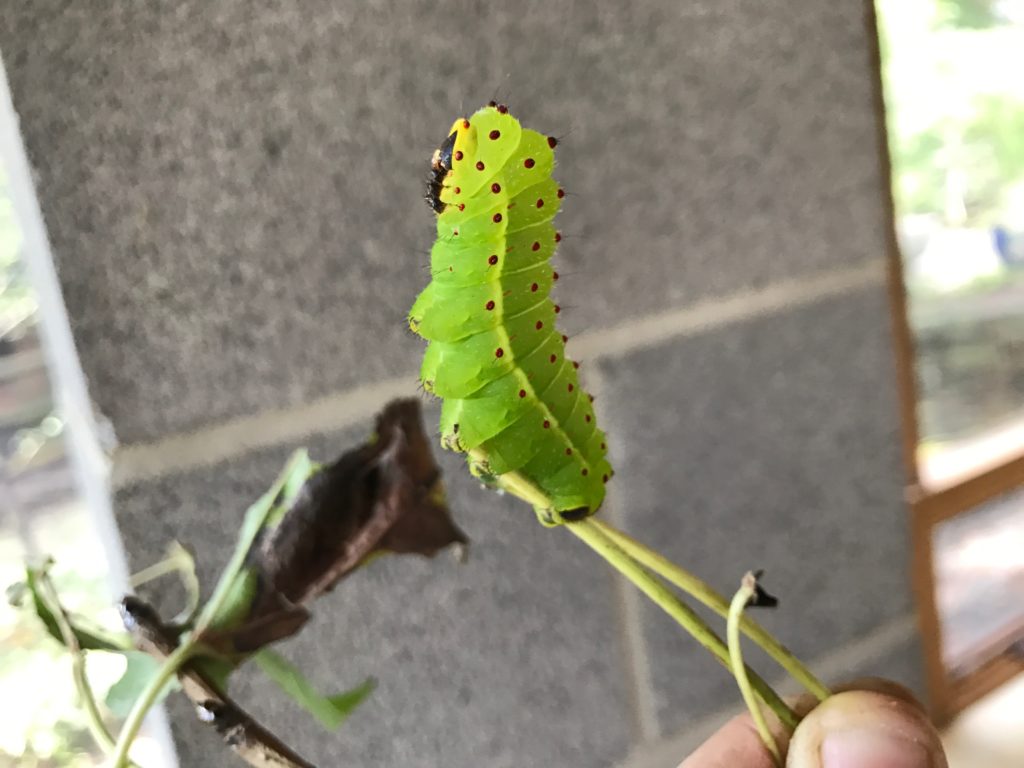
By the fourth instar, the caterpillars can start to look quite dignified.

In the fifth instar the spots are just tiny pale splotches. The caterpillars look fatter and softer. Even though they’re bright green and big – more than two inches long – their camouflage is so effective that it can still be hard to spot them.
Cocooning

Luna caterpillars will often (but not always) turn a reddish color when they’re getting ready to cocoon. This is a time they like to wander off, so make sure whatever enclosure you’re keeping them in is secure.

When the time comes, they’ll dump a splash of liquid and then start spinning silk.
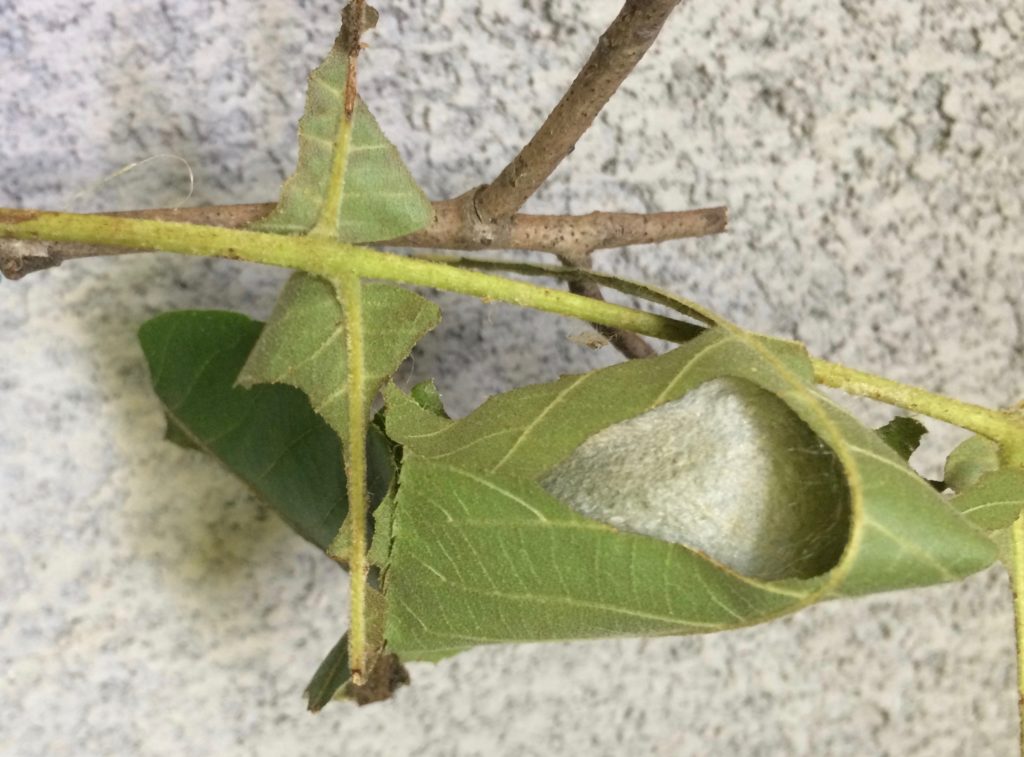
Usually they’ll pull leaves around themselves for camouflage. But sometimes they use the cage mesh, or even a paper towel.
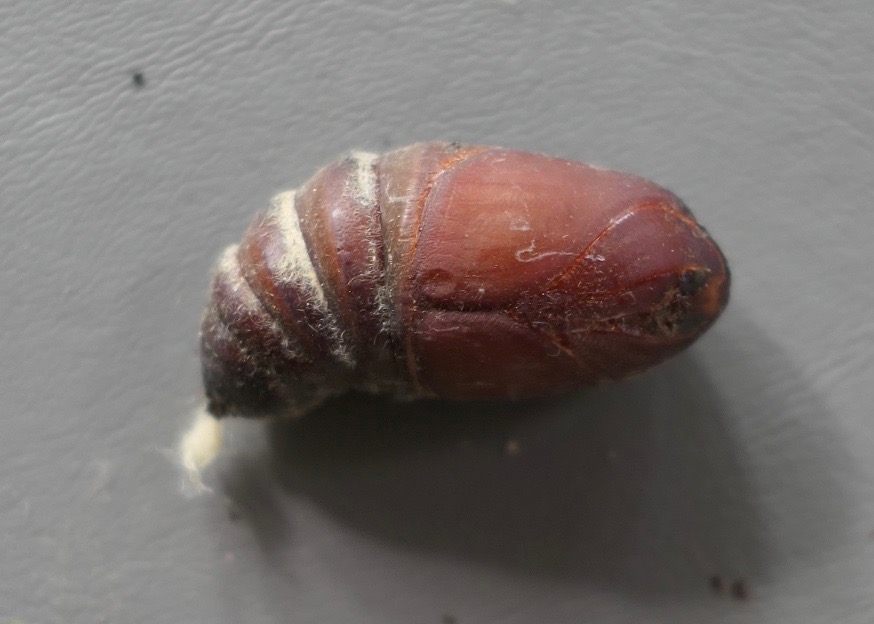
Once the cocoon is done, they shed their skin one last time and form a pupa inside it.

In spring and summer, they’ll stay in the cocoon for 3-4 weeks. If it’s later in the fall, they’ll hibernate there all winter, and come out in the spring.
You can learn more about the next stage of Luna life here.